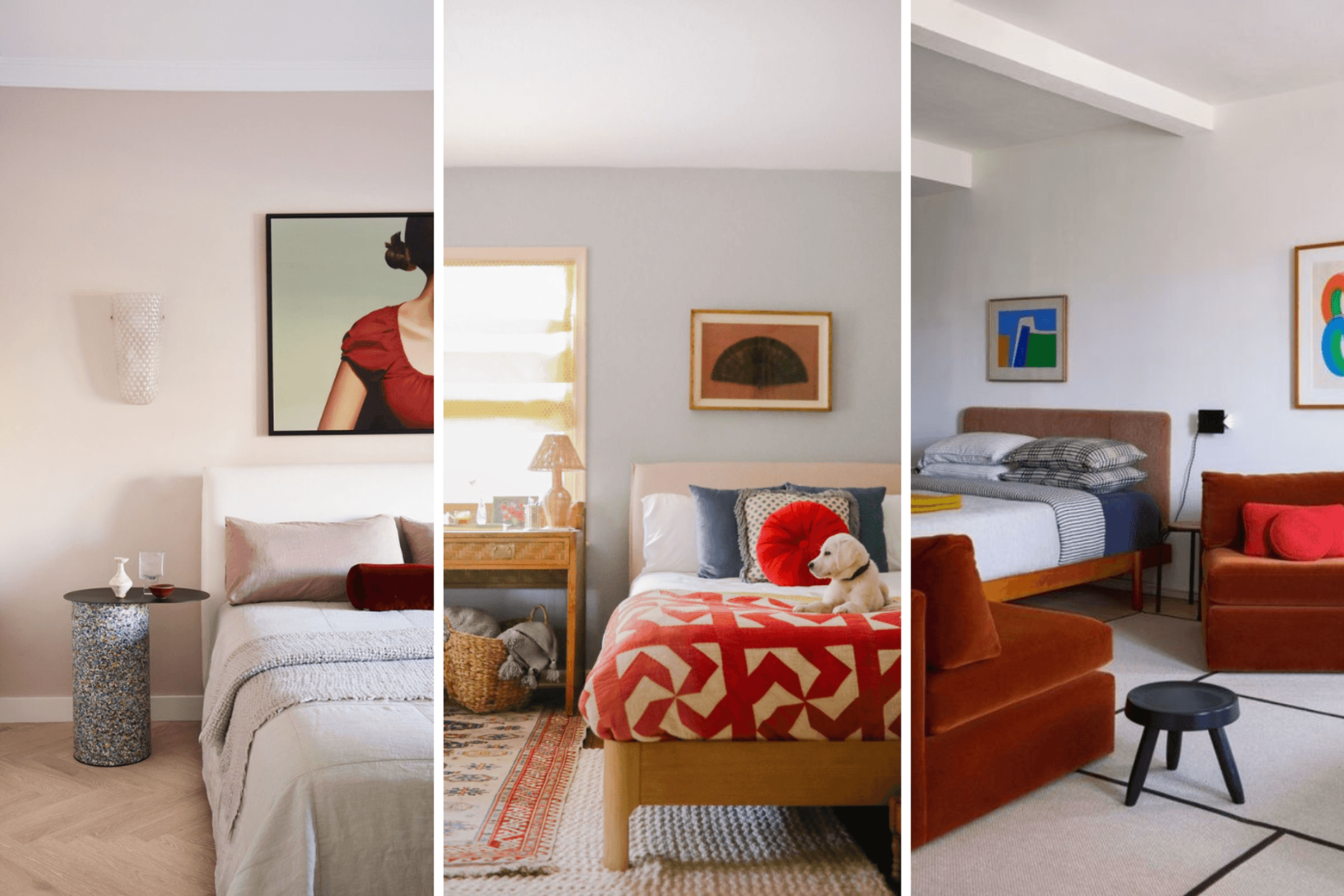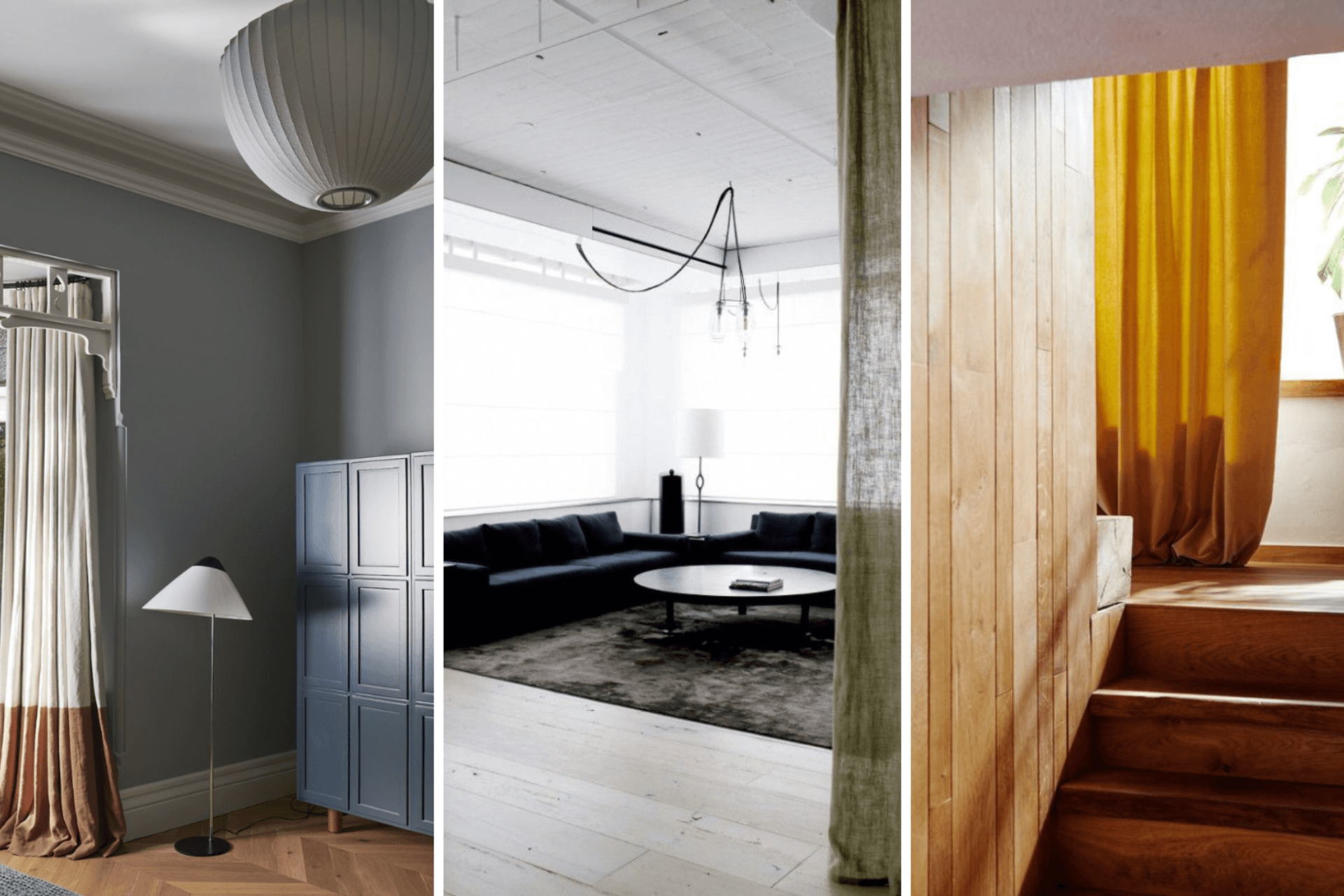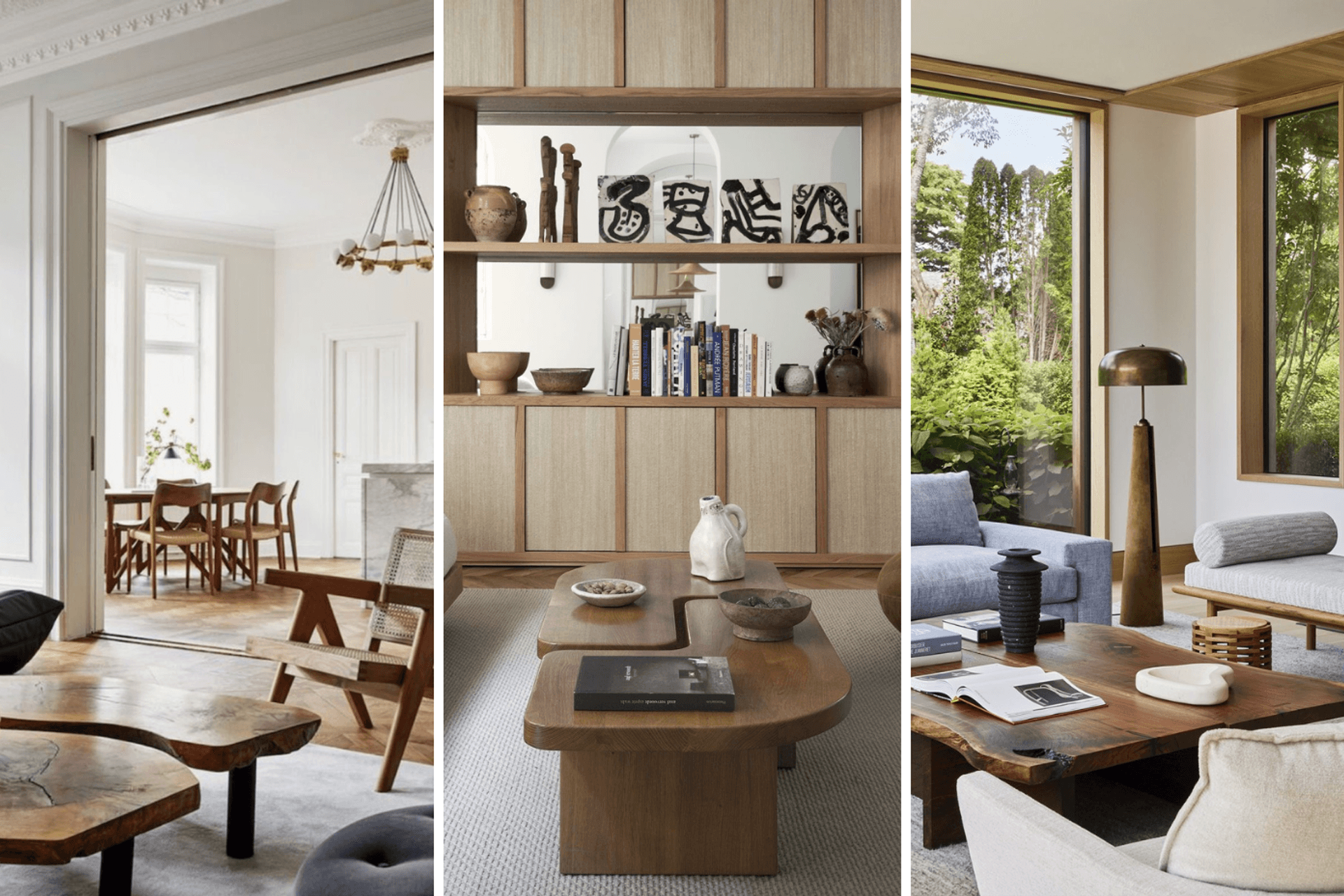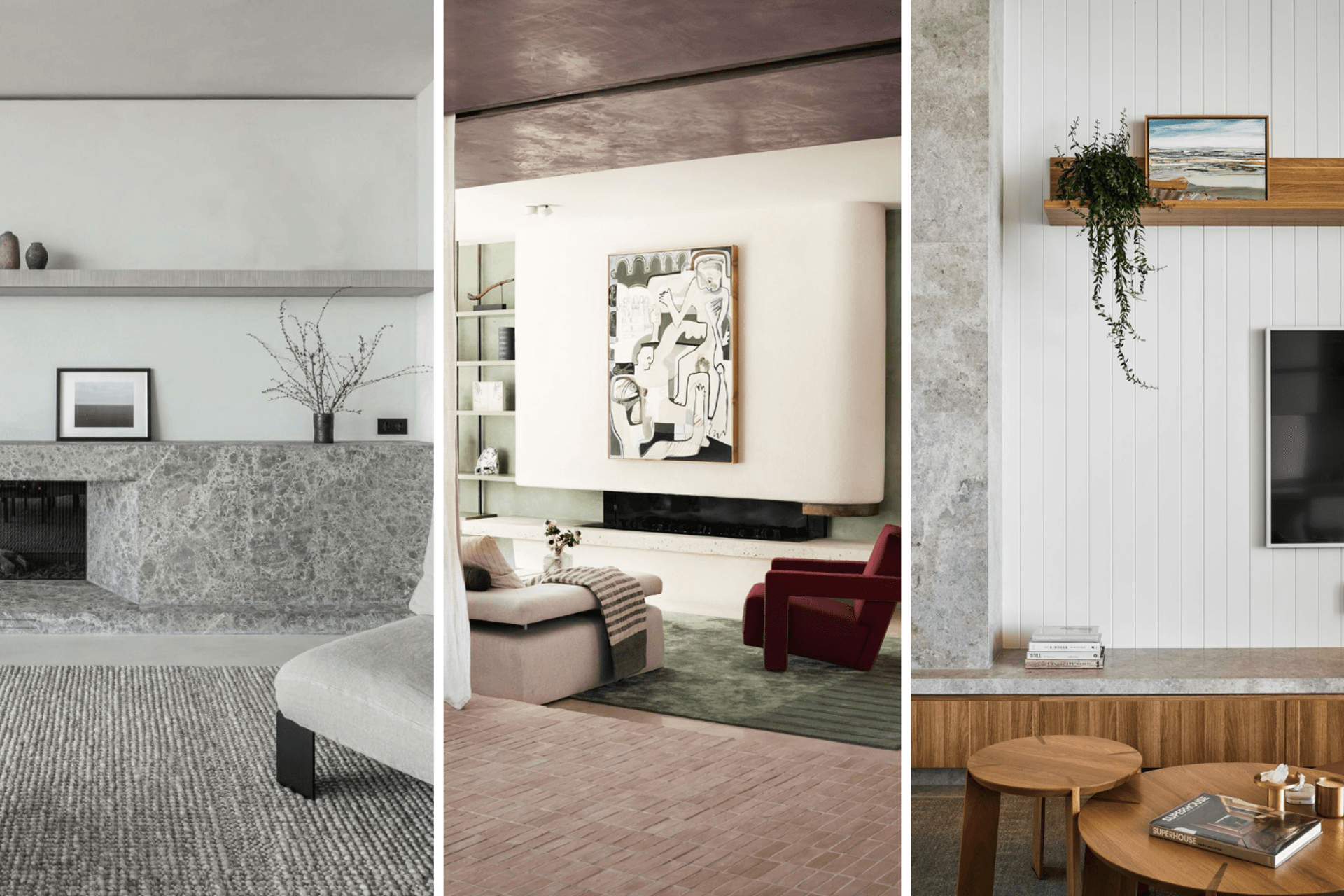Embracing Different Materials as Design Tools

Upholstery
In our 20s a friend of mine had a job assisting in photography styling for an interiors magazine. I remember her telling me how often her job was to make white slip covers for sofas so they were indistinct and discreet. I understand how that might improve a photograph but take a look at this selection of gorgeous interiors where interesting choices in fabric on seating absolutely makes the room.
When selecting fabrics consider the overall effect you are looking to create and be conscious of how the colour, texture and pattern of the fabric will work towards that. Lush velvet, comfy corduroy, fresh strips, pretty florals, calming olive and vibrant red… they all contribute (or detract) from your vision.
This article is all about different materials and sharing examples of spaces that have used them to (we think) great effect.

Bedding
If the Spoil Me Fairy was flitting around offering frivolous new year wishes mine might be crisp, fresh sheets daily, foreverrr.
For most bedrooms the proportions and orientation of the bed mean it is the first impression and focal point of the room. It is an important item to dress in a way that makes this sanctuary space offer maximum joy.
Whether it is a serene and minimal palette, a rich and tightly coordinated one or a playful collection of colour and pattern—finding the right fabrics and other textiles for our bed is worth the effort. Every morning you have a wee composition to pull together that has been created just for you!

Windows
When it comes to selecting fabric for your curtains or blinds, the scale and proportion of the window to the room will influence your selection as well as the style of window joinery. However, the best choice of fabric for your windows is only partly driven by the window itself.
You will also want consider what is outside the window (do you want the window or the view to be the hero?) and also if there are any other windows in the space. If there is no other natural light, your curtain fabric will not be directly lit during the day, so test view it as it will hang, off to the side not with direct sunlight on it.
The concept of ‘drape’ is one that is super important when it comes to curtain fabric as that effects how the fabric hangs and consequently its level of informality and its presence. As with a dress, you want it neither meringue nor limp rag!

Walls
Textiles in the form of fabric or weaves are a valuable injection of texture and variation in colour and add an organic element to a room.
Grass cloth and other woven textiles can be sourced in the form of rolled wall coverings (wallpaper), or soft fabric can be hung as a large art piece or upholstered into panels to fix to your walls.
We’ve also included some examples were curtains have been used in place of a solid wall, subtly dividing spaces in an informal and flexible way.

Rugs
Never underestimate the effect of the floor! I think that every time I do a good mop and vacuum and the same thinking applies to the use of rugs.
Rugs can help to define a space within a larger area and add colour, texture and pattern. In a colourful room the floor offers another surface to add interest to and in more a minimalist interior a floor rug can be a great way to anchor a zone and stop it from being overly bland.

Timber: Furniture
The use of timber in our interiors contributes warmth and a connection to nature. Timber can be cut, sculpted and bent making it a versatile material for furniture and one that can add an additional softness and comfort through its form as well as through its colour and grain.
Timber readily complements other materials—it would be unusual for us to have a material palette that didn’t include timber. Also, the colour and grain of different species work well together so don’t be shy about mixing it up for a rich and interesting interior.
The closer you can get to solid timber for your furniture the more life you will get out of your piece—both in its aesthetics and its durability. Many of the pieces in this image collection are solid timber and you get a sense of both their quality and the ‘from nature’ qualities they add to a room even from a photo.

Timber: Walls
I don’t think I need to quote studies (they exist!) to convince you that having natural products such as timber in our buildings offers feel good factors that mimic spending time outside in nature.
A popular way to incorporate timber in our built environment is through interior cladding and panels used instead of, or alongside, other wall finishes.
The inherent warmth of timber as well as its variation in colour and grain adds comfort and richness. The increasing availability of different finishes and profiles such as battens or scallops contribute further interest and a sense of craft.

Timber: Joinery
This is probably my favourite section in our Summer Series. I love, love, love well crafted joinery and believe timber is such a powerful material to improve the warmth and comfort of a space.
We can incorporate timber in our joinery in its solid form, as a veneer and as plywood. We can use it for cabinets, shelving sections and as tactile, sculpted handles.
Timber is very versatile in its adaptability to suit many design styles as you can select for a colour, cut (which effects the amount of pattern in the grain) as well as finish from gloss, satin, oiled or rustic rough cut.

Stone: Benchtops
Stone’s organic appeal is in its variation in colour and grain created through the gifts of nature and time. It also has the potential to be a sculptural as well as practical material on our homes.
There is more variety in natural stone but we can enjoy some of the same effects in engineered stone, commonly used in kitchen and bathroom work surfaces.

Stone: Furniture
As a material applied to our home’s interior design, stone’s sculptural nature is well utilised in furniture. Its weighty solidity makes pieces feel grounded and one piece can combine roughly cut, smoothly polished or carved finishes.
For a singular design element it carries a lot of crafted and organic characteristics, as well as exuding quality and timelessness.

Stone & Tile: Fire Place
Our fireplaces are often the focal point of a room and part of a broader design element incorporating joinery, TV, ledges and art. The visual presence of stone alongside its non-flammability make it a great material for this area.

